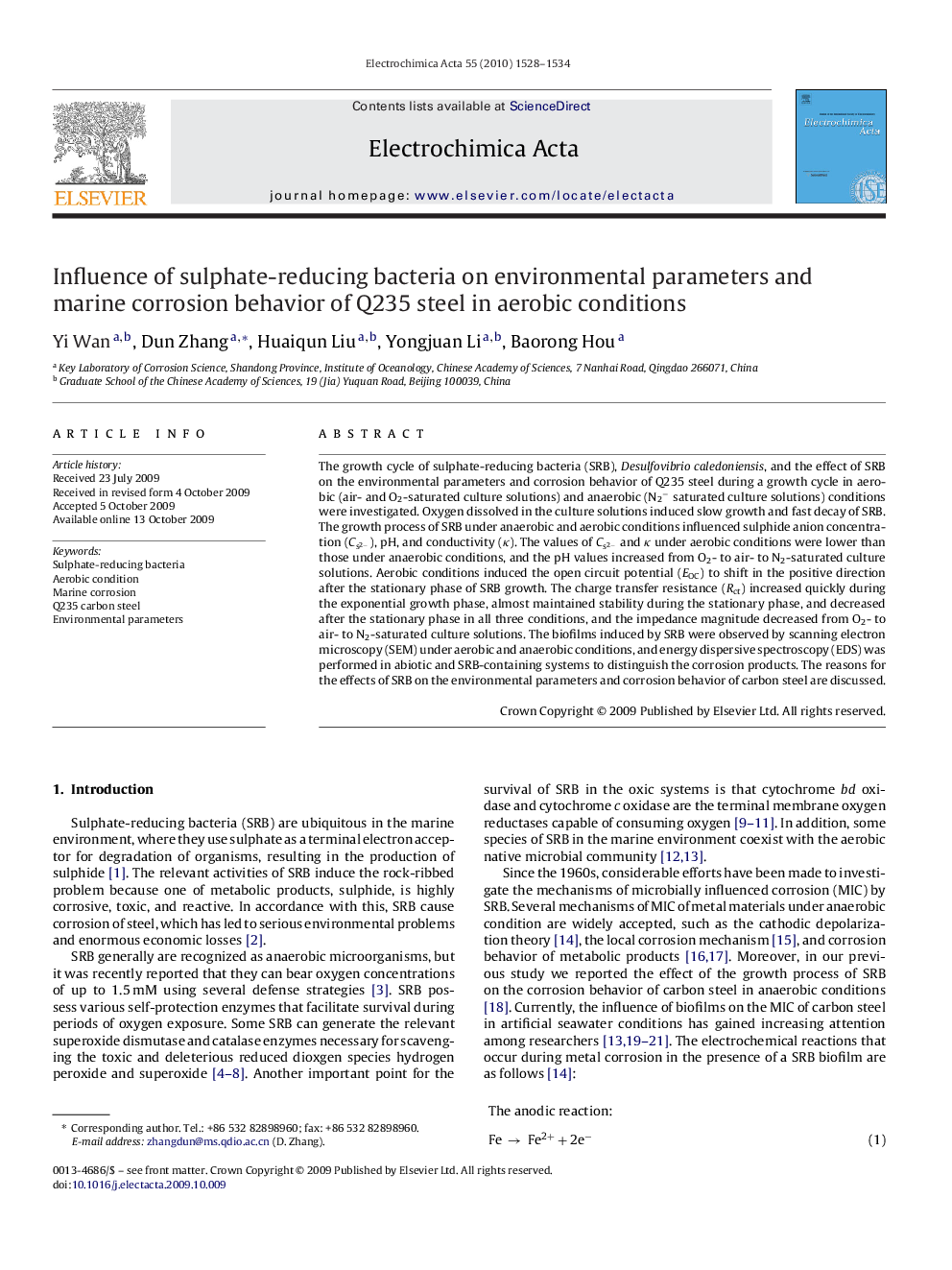| Article ID | Journal | Published Year | Pages | File Type |
|---|---|---|---|---|
| 192068 | Electrochimica Acta | 2010 | 7 Pages |
The growth cycle of sulphate-reducing bacteria (SRB), Desulfovibrio caledoniensis, and the effect of SRB on the environmental parameters and corrosion behavior of Q235 steel during a growth cycle in aerobic (air- and O2-saturated culture solutions) and anaerobic (N2− saturated culture solutions) conditions were investigated. Oxygen dissolved in the culture solutions induced slow growth and fast decay of SRB. The growth process of SRB under anaerobic and aerobic conditions influenced sulphide anion concentration (Cs2−)(Cs2−), pH, and conductivity (κ ). The values of Cs2−Cs2− and κ under aerobic conditions were lower than those under anaerobic conditions, and the pH values increased from O2- to air- to N2-saturated culture solutions. Aerobic conditions induced the open circuit potential (EOC) to shift in the positive direction after the stationary phase of SRB growth. The charge transfer resistance (Rct) increased quickly during the exponential growth phase, almost maintained stability during the stationary phase, and decreased after the stationary phase in all three conditions, and the impedance magnitude decreased from O2- to air- to N2-saturated culture solutions. The biofilms induced by SRB were observed by scanning electron microscopy (SEM) under aerobic and anaerobic conditions, and energy dispersive spectroscopy (EDS) was performed in abiotic and SRB-containing systems to distinguish the corrosion products. The reasons for the effects of SRB on the environmental parameters and corrosion behavior of carbon steel are discussed.
